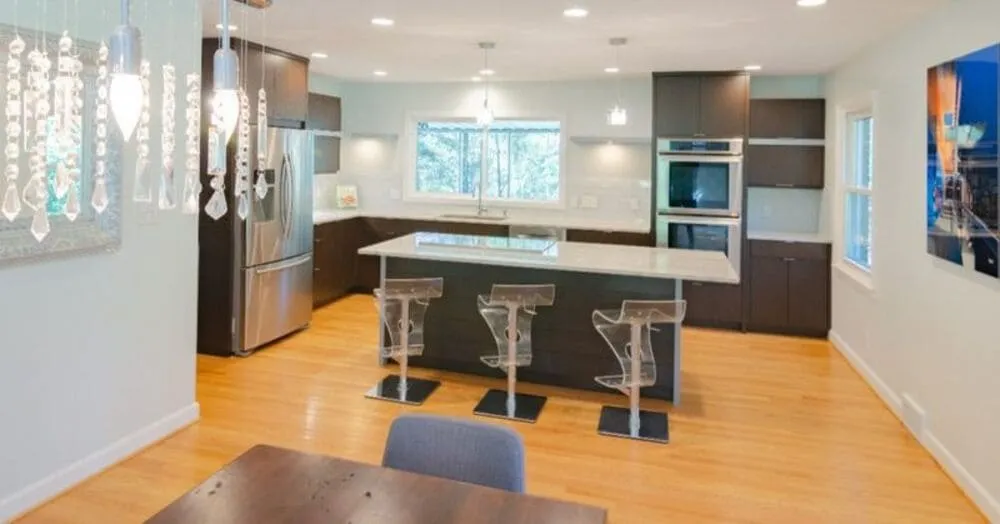What do the theory and the results of studies from different cities show so far?
How has the global emergence of ridesharing changed the dynamics of housing markets? Dozens of studies from different cities confirm that the development of short-term rentals is associated with an increase in housing prices. The phenomenon became known as the "Airbnb effect" because Airbnb was the innovative company that first enabled the mass letting of housing for short-term rentals. Nowadays, there are other alternatives to Airbnb, but the business brand remains synonymous with short-term property rentals. This article aims to explain why short-term rentals lead to an increase in house prices. To this end, it examines how the Airbnb effect affects the demand and supply of residential properties.
Supply mechanism: transition from long-term to short-term rentals
The outflow of housing from the long-term rental market to the short-term rental market is fundamentally changing the housing supply. Of course, the main driver for this is the opportunity to make more profit from short-term rentals. But also in certain situations, property owners can benefit from the flexibility of short-term letting. For example, when they decide that they will use their apartment, but not permanently. Or when they use Airbnb as an alternative without committing to long-term tenants while planning to sell their home in the near future. With a sufficient critical mass of such homeowners, the supply of long-term rental apartments decreases at the expense of the growing number of Airbnb apartments. The smaller number of available long-term rental housing leads to higher competition between tenants and an increase in the prices of traditional rents. The increase affects house prices, as the price of a property can be seen as the value of the sum of all future cash flows that the house can generate. Investigating this market mechanism in different cities, the empirical studies done so far establish:
- 1% increase in active US Airbnb properties from 2012-2016 leads to 0.018% increase in rents and 0.026% increase in home prices nationally
- Airbnb activity in Barcelona between 2009 and 2017 led to a 1.9% increase in rents and a 3.7% increase in housing prices; in hot tourist areas, rents increased by 7% and prices by 17%
- For the 2014-2018 period, the effect of short-term rentals across Los Angeles was a 3.6% increase in home prices; for the attractive parts, however, the increase is several times greater - in a range of 2.5 kilometers from Hollywood, the growth in property prices is 15%
There are similar established results for a number of large cities such as Amsterdam, Paris, Beijing and others. From the results so far, what stands out is that short-term letting is a phenomenon that has the greatest impact primarily in the central and tourist areas of large megacities. The reason is that the main driver of demand for short-term rentals is tourists, and the central city areas are where the entertainment, historical sites and commercial attractions to visit are located. But more on the search later. What is of further importance in relation to the supply of properties in the center are the constraints that cause inelasticity to characterize the market in these parts of the city.

The inelasticity of the supply of properties in the center.
Why are city centers attractive to investors?
The center finds itself with limitations for both geographic and market and regulatory reasons. Since ancient times, central urban areas have played a significant role and have been the heart of the city, where the markets between buyers and sellers are concentrated and created. To this day, the downtown area is one of the most competitive and attractive for all kinds of private and public activities, making the area densely built. Thus, the central areas are not only geographically limited, but it is also more difficult to find new terrain on which new housing can be built. What's more, downtown building regulations tend to be stricter. Firstly, because of the scarcity of empty spaces, and secondly, because a large part of the architectural-historical heritage is located and preserved precisely there. The combination of all these constraints causes the property markets in the central parts of the cities to be more inelastic in terms of supply compared to other residential areas. The more inelastic the supply, the more difficult it is to create new housing in central locations. Then, in the absence of the ability to build enough housing and increasing demand for property purchases, the market achieves equilibrium by more sensitive price increases rather than by creating new supply.

Notes: The initial position of the graph is at the housing market equilibrium value P0. The price is formed at the intersection of demand ("Demand 0") and supply in the market where there is Q0 per number of properties for sale. In an increasing search, the search function shifts up and to the right (from "Search 0" to "Search 1"). Two parallel cases follow. Under Elastic Supply, Q2 number of homes for sale appear on the market, and the price increases from P0 to P1. In Inelastic Supply, the inability to build more homes for sale is reflected in Q1 being less than Q2. The equilibrium market value under inelastic supply rises from P0 to P2, which is a higher price when supply is elastic (P1).
How does the dynamics of home purchase demand change in the presence of a short-term rental market?
Given the inelastic supply in the inner city, what exactly would be the mechanism by which Airbnb should influence the increase in housing prices in the area from the purchase side? As already mentioned, central apartments are becoming an alternative that attracts a significant part of the influx of tourists and business travelers to the cities. In that case, property owners in these parts are turning to the short-term market. When the alternative becomes a more profitable venture than long-term letting, this process generates new demand for buying homes in the area among investors motivated by a higher return on residential property investment. Due to inelastic supply, and as a result of increased demand to purchase property in the city centre, this new demand will be more tangibly capitalized into existing house prices in the area than the same demand in other areas of the city with more elastic supply (Chart 1 ).
Conclusion
The article presents an analysis of how short-term rentals affect housing prices in different cities around the world. It becomes clear why some cities are experiencing such an aggressive Airbnb effect – this phenomenon can simultaneously put upward pressure on housing prices on both the supply and demand sides. The question remains - is it possible that the theory suggests how the Airbnb effect would also manifest itself in Sofia? In fact, a similar study is currently being conducted for our capital as well. When the results are available, we would be happy to share the observations and how well they fit the theory of the Airbnb effect.
Author: Iliya Sarandaliev



